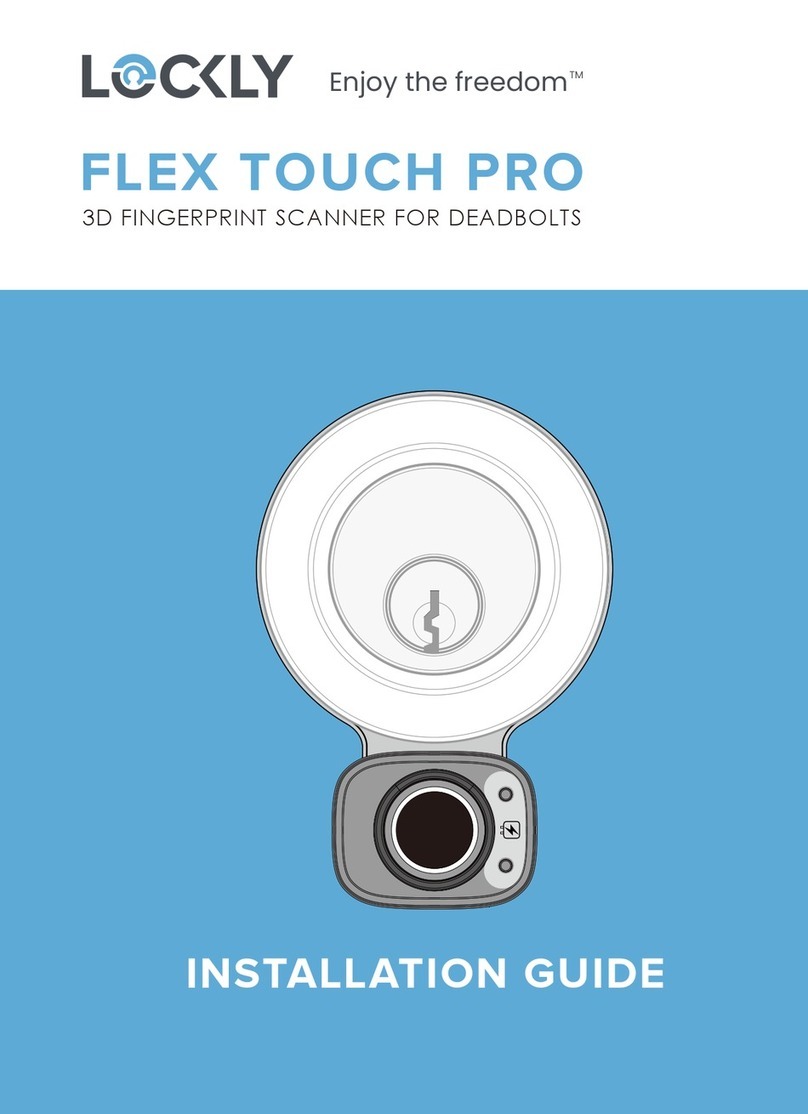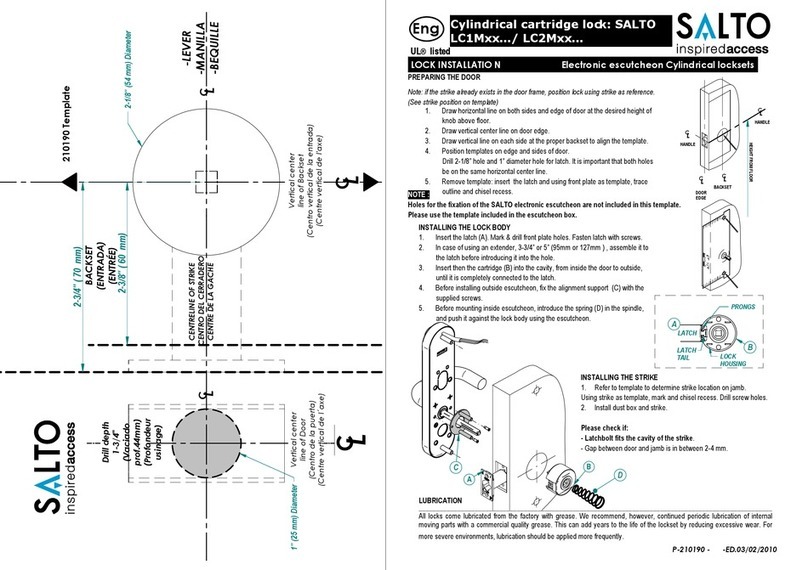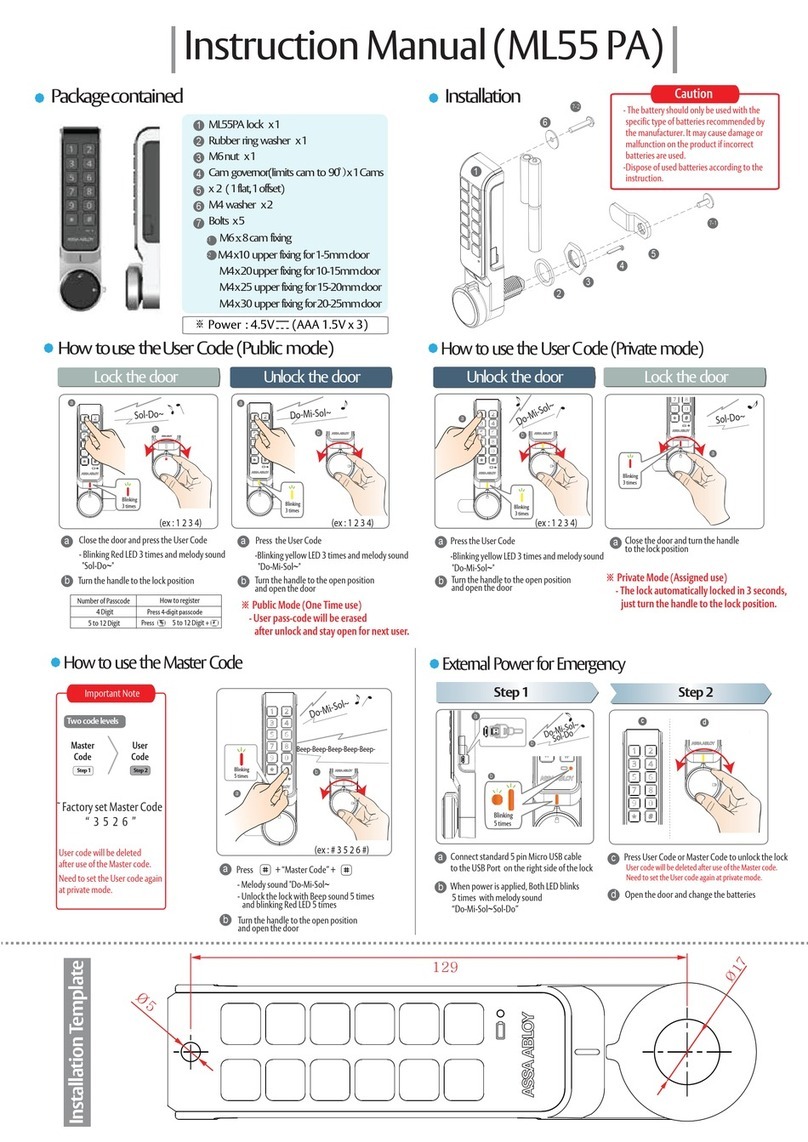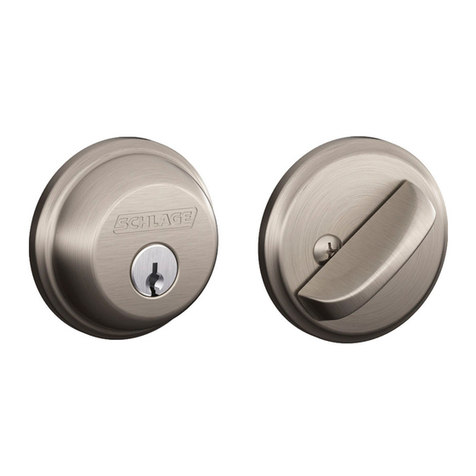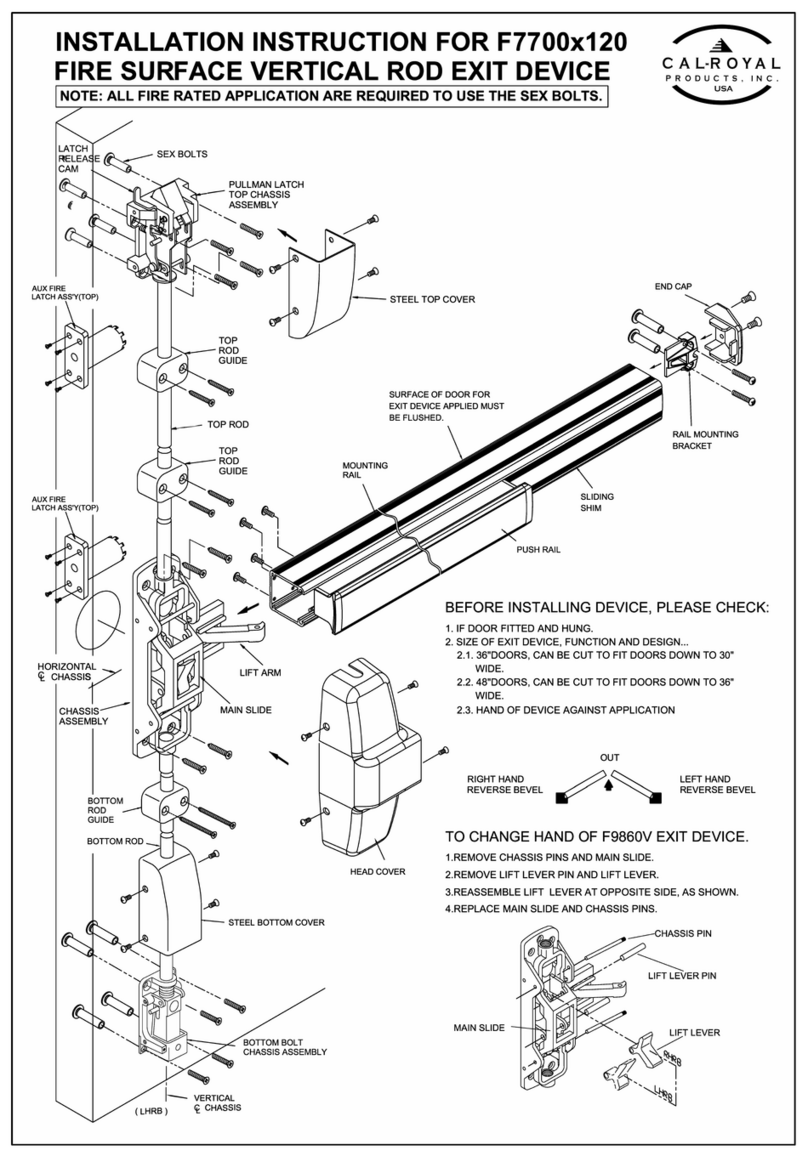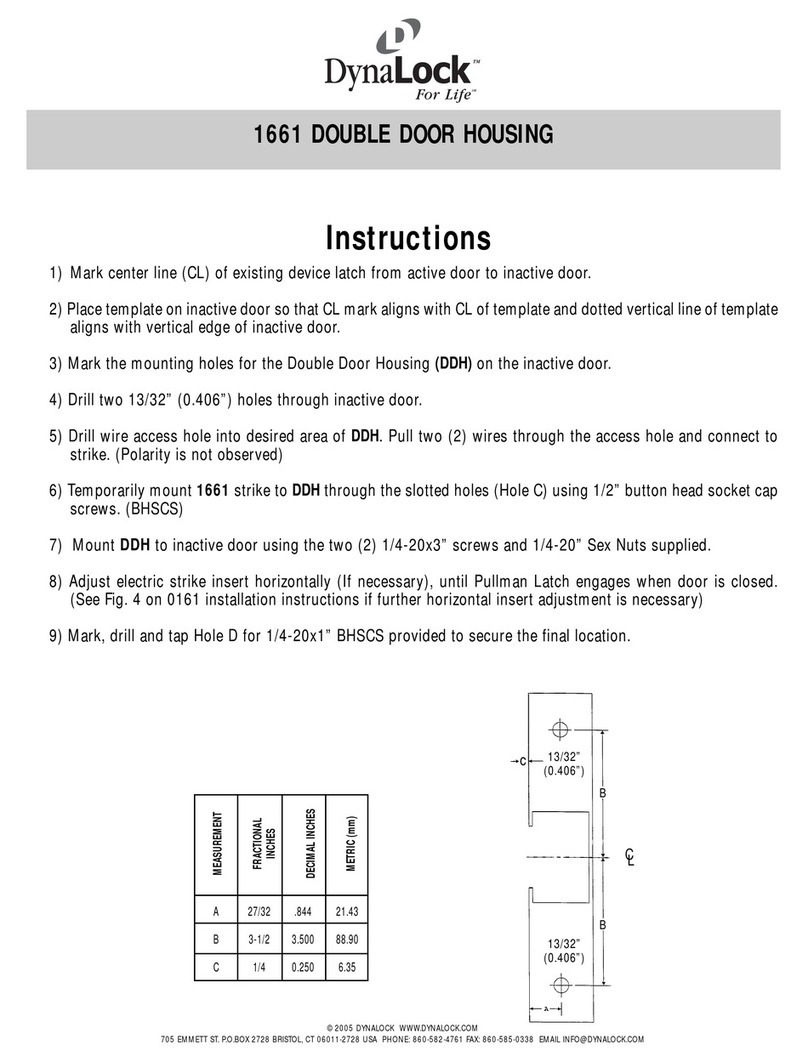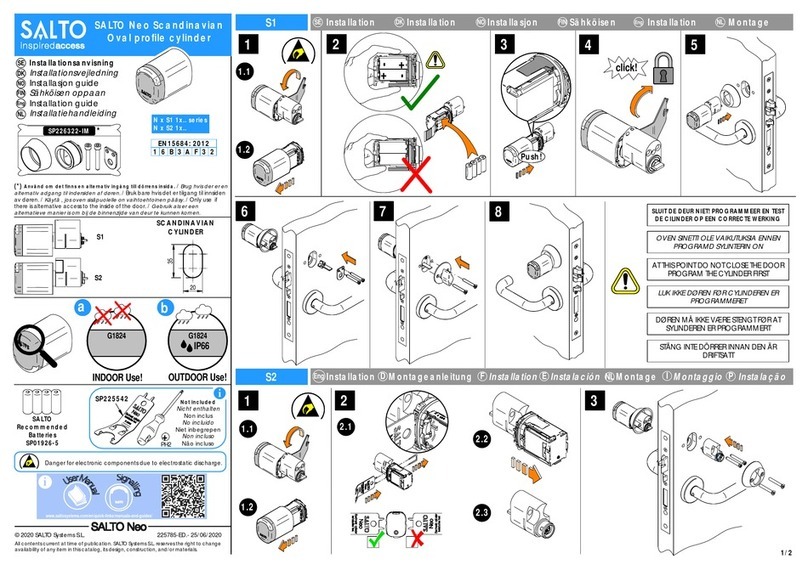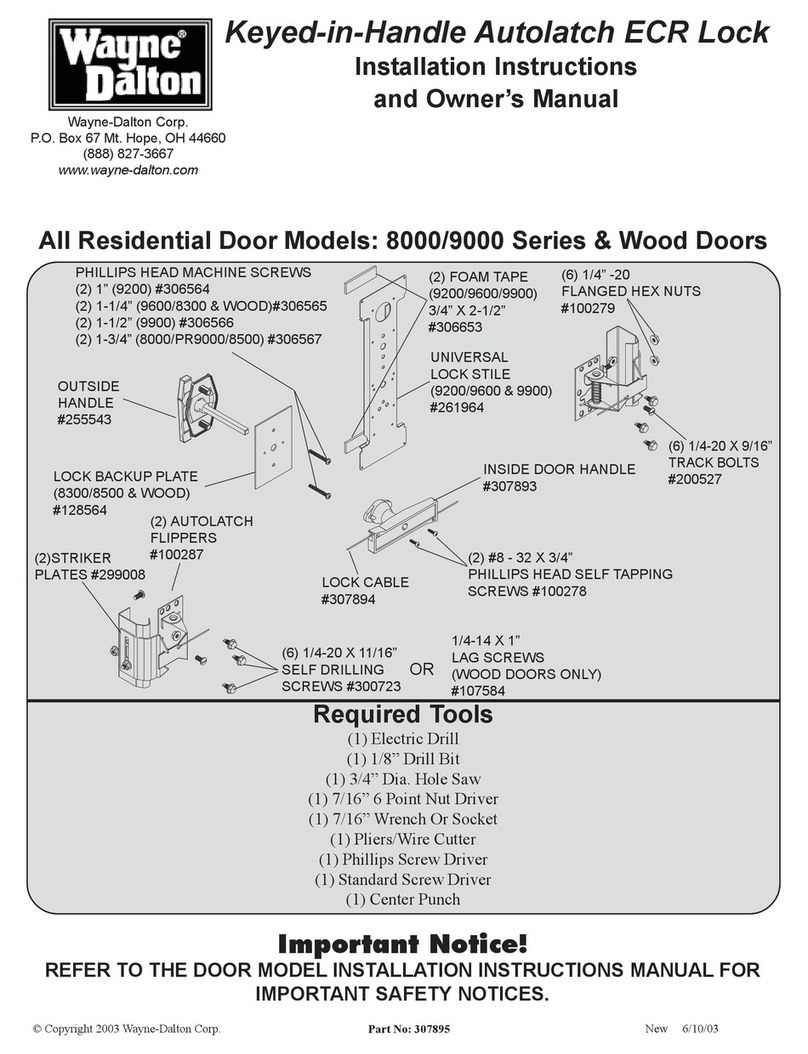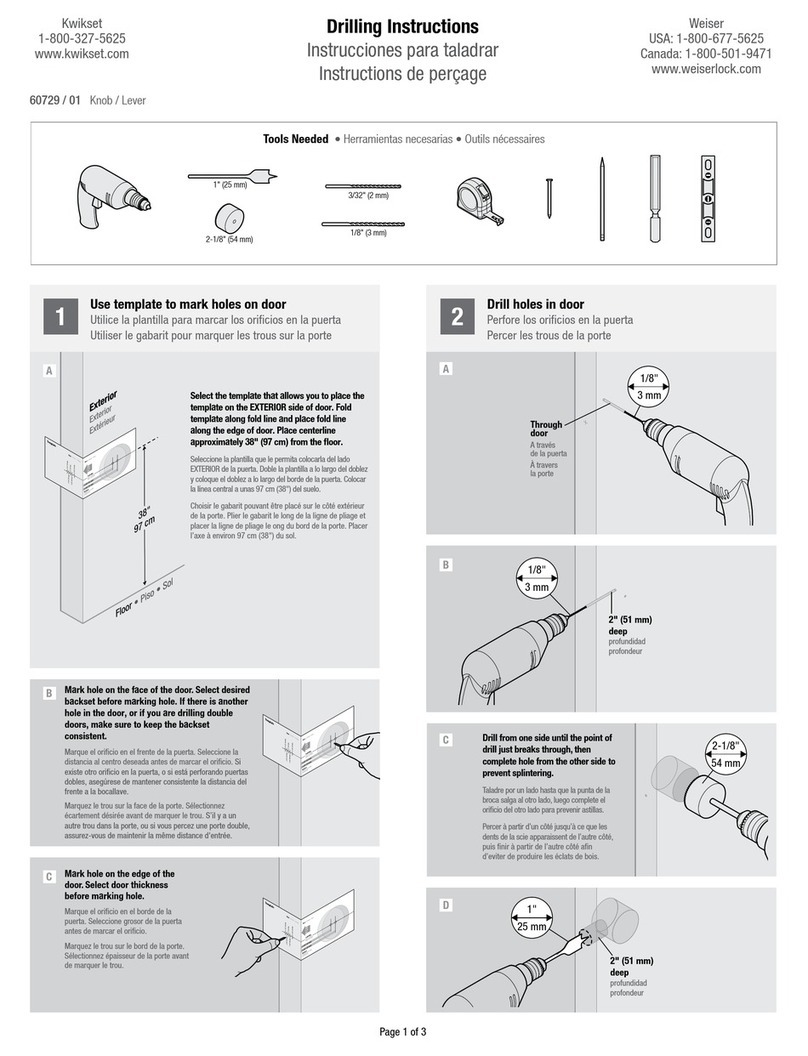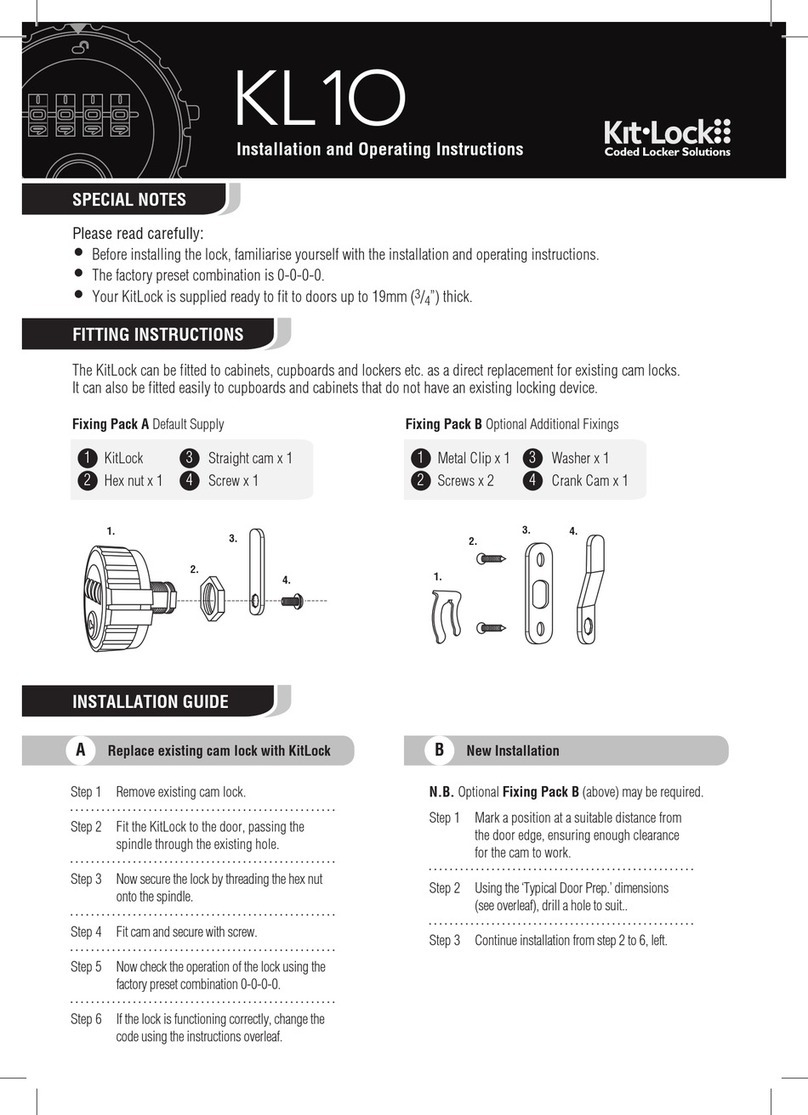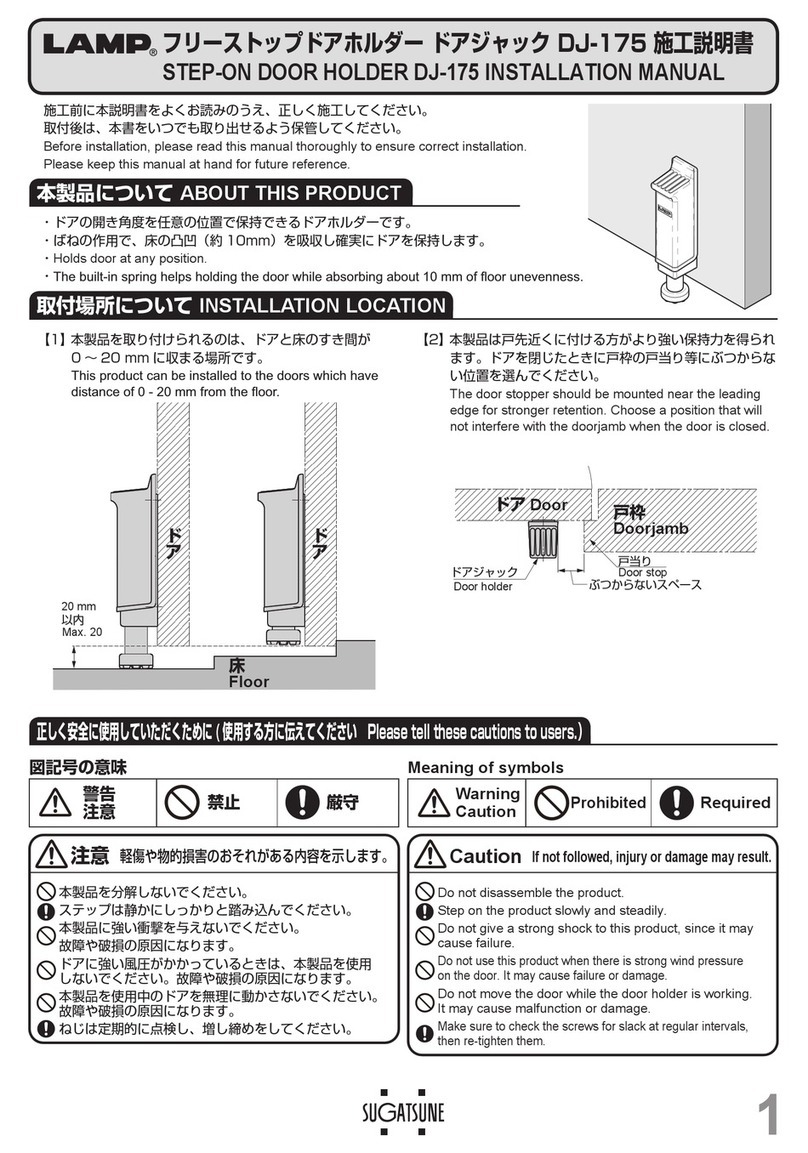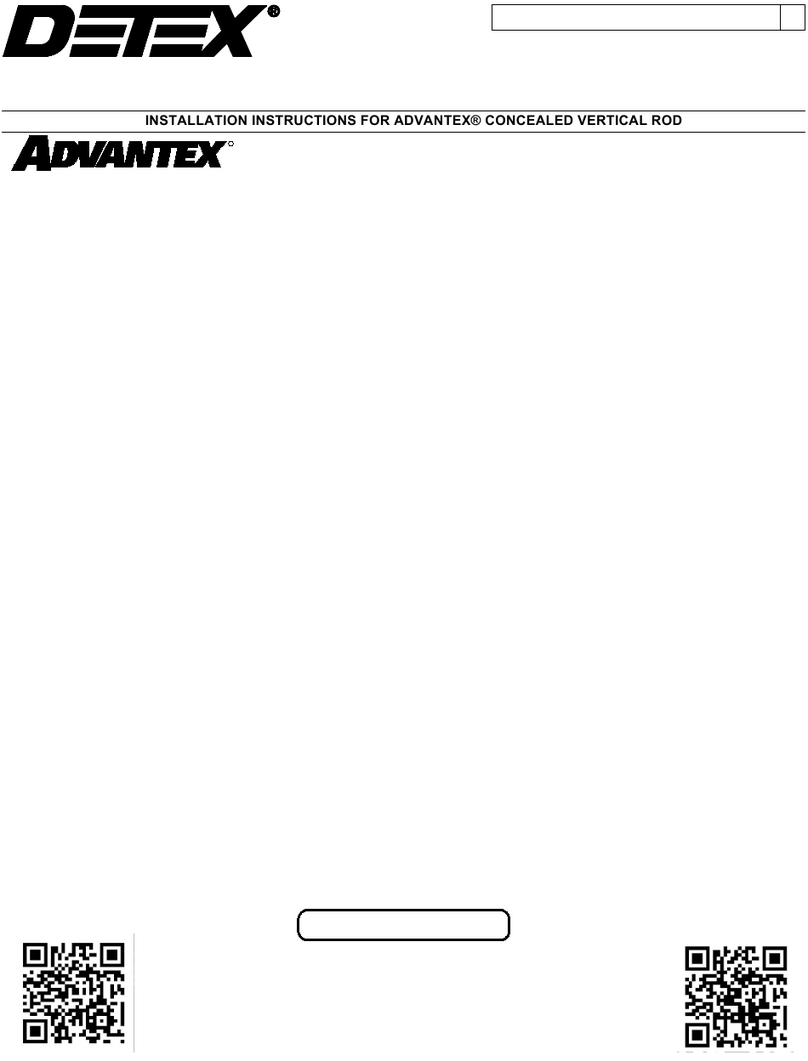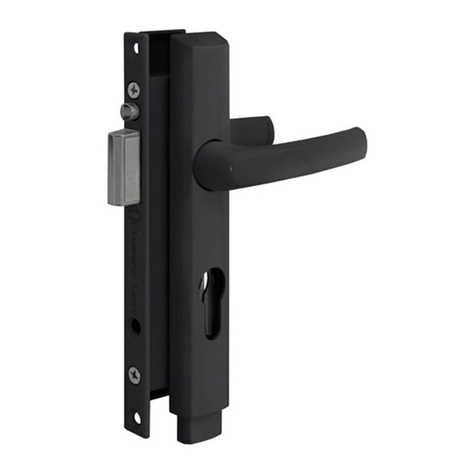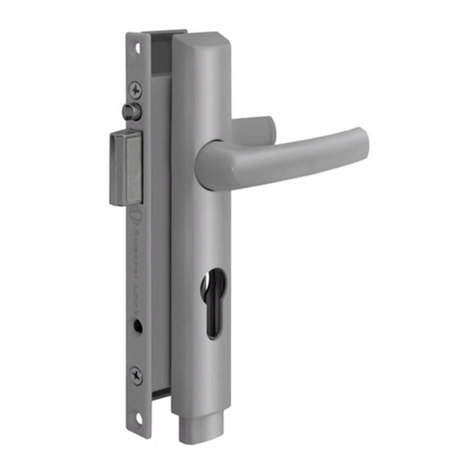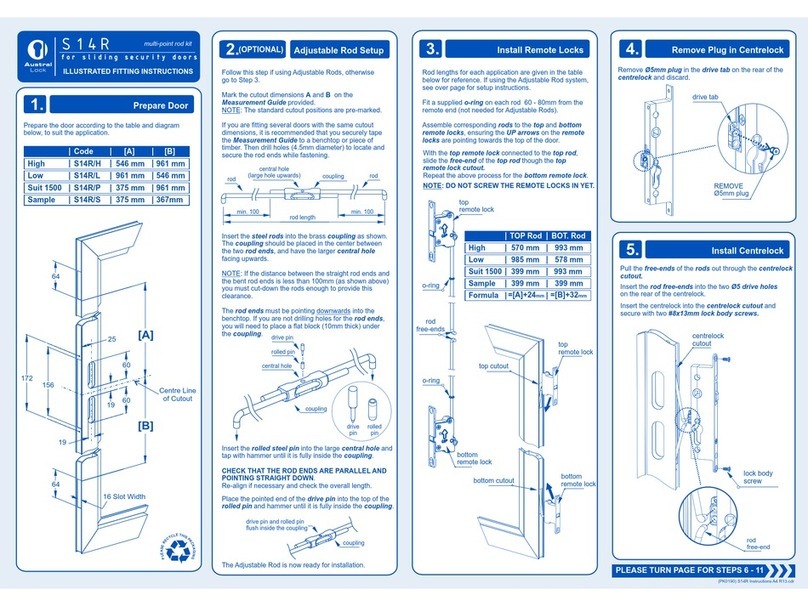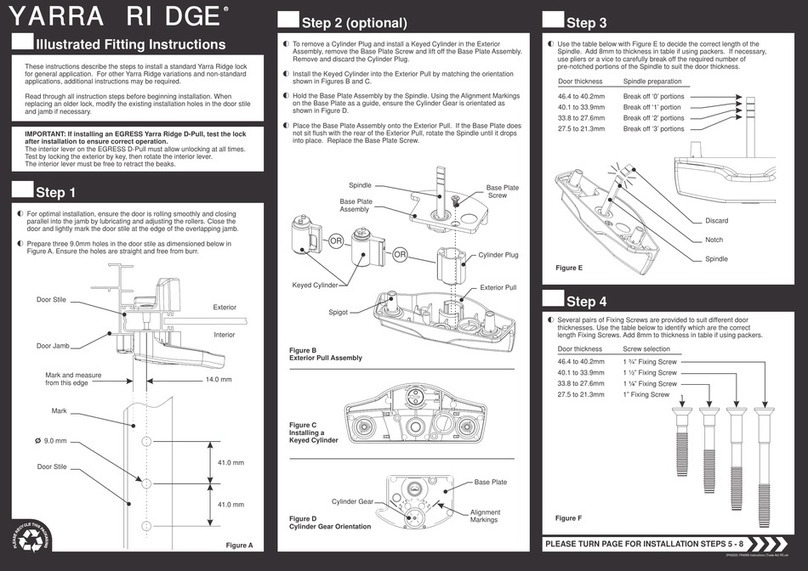
The product must be installed according to the instructions included in the product packaging and the
door should be apertured according to the door “cut-out” dimensions and tolerances shown.
Prior to tting ensure that:
• Doors stored on site are stored in a clean dry area free from cement, lime, paint, acid etc.
During tting of the lock ensure that :
• No metal swarf or other contaminants enter the lock body.
• The xing screws do not damage the product nish.
After installation of the door ensure that:
• The door is correctly adjusted with the correct clearances.
• The lock engages the catch plate correctly.
• The door is protected from building fall-out such as wet plaster, mortar, and paint.
If the door becomes contaminated:
• Do not paint the lock body or faceplate.
• Remove wet plaster, cement, mortar and other droppings immediately, using clean water
and a sponge or rag, to avoid permanent staining or scratching of the product nish. If
removal is delayed and scraping becomes necessary the surface nish may suffer.
Annually inspect the door to conrm that the door operates with the correct clearances, closes and
opens without obstruction. Conrm that the lock beaks engage easily with the catch plate when the
door is closed and the lever or key is turned - adjust the door if necessary.
Annually check that when the door is closed, the lock can be locked by key and by the lever.
NB : The lock assembly has been lubricated for life, and should not be disassembled by the user.
Every six months, powder coated surfaces should be cleaned to protect the nish. However, in areas
where pollutants are more prevalent, especially in coastal or industrial regions, cleaning should be
carried out every two to three months.
To clean the powder coated surface:
1. Carefully remove any loose deposits with a wet sponge.
2. Use a soft brush (non abrasive) or cloth and a mild household detergent solution to
remove dust, salt and other deposits. Do not use steel wool, scrapers, scouring liquids or
powders to remove deposits as these permanently scratch the coating surface.
Plated nishes are susceptible to tarnishing if they come into contact with moisture, wet paint,
or water vapour. All plated nishes should be coated with a non-abrasive furniture or car wax
immediately after installation. Plated nishes should be regularly wiped with a non-abrasive
furniture or car wax, taking care not to scratch any protective nishes that are employed to protect
the surface and prevent tarnishing.
Installation
Maintenance
Cleaning Powder Coatings
Cleaning Chrome, Satin Chrome, Gold and Brass Finishes
MAINTENANCE LOG
5.
8.
Fasten lock to door
Catch plate installation
7. Fit interior pull
• If the Beaks of the Interior Assembly are extended, use
the Lever to retract them.
• Remove the Handle Screws and lift the Interior Handle
off the Interior Base, place them aside.
• Place the Exterior Assembly onto the exterior face of the
door stile. Rotate the protruding Spindle into a vertical
position.
• While placing the Interior Base onto the interior face of
the door stile, note the following:
- Allow the protruding Spindle to enter the receiving slot
on the underside of the Interior Base.
- Locate the bosses on the underside of the Interior Base
into the holes in the door stile.
• Pass the correct length Fixing Screws through the
Interior Base and screw rmly into the Exterior Assembly.
Reverse the Adjustment Screws 3 anti-clockwise turns from fully
‘screwed-in’ position.
Front Fix Catchplate Installation:
Remove the cover x screws and the cover.
Close the door and position the Catch Assembly on the jamb
opposite the lock with a 1 to 2mm gap between the lock and Catch
Assembly. Mark the centre of the ‘front x’ slots and drill 3.5mm
pilot holes.
Use two ‘Front Fix’ 9.5mm long screws to t the Catch Assembly
lightly to the jamb. Gently close the door and operate the Lever to
test the Beak engagement. Move the CatchPlate Assembly up and
down and adjust the Catch Plate in and out to achieve the best t.
Tighten the ‘Front Fix’ Catch Screws, ret the Cover and re-install
the cover x screws.
Face Fix Catchplate Installation:
Leave the Cover in place. Mark the centre of the ‘face x’ slots.
Screw to the jamb using two ‘Face Fix’ 25mm long screws. Adjust
catchplate position as described above.
OEM1DOC01
ZINC 3749 0917
• To install a Keyed Cylinder into the Interior
Assembly, remove and discard the Cylinder Plug
from the underside of the Interior Handle.
• Install the Keyed Cylinder into the Interior Handle
matching the orientation shown in Figure E.
• Place the Interior Handle over the Interior Base.
It may be necessary to rotate the Lever to nd its
correct orientation. Ret the two Handle Screws.
• Depress the Plunger and test the lock operation by
operating the Lever and Cylinder Key(s) if applicable.
NOTE: Ensure the Beaks are in the retracted
position before closing the door.
SPACERS
Timber doors with a weather
seal and some aluminium
doors may require spacers
between the door and lock.
Interior base
Fixing Screw
Plunger
Handle Screw
Beak
Cylinder Plug
Keyed Cylinder
Interior Handle
OR
Figure E
6. Install cylinder(optional)
Face Fix Installation
Door Jamb
Face Fix
Screws
Interior Door
enters here
“Face Fix” Screw
9.5mm long
Cover
Figure F Front Fix Installation
Door Jamb
Front Fix
Screws
Cover Fix
Screws
Adjustment
Screws
Interior Door
enters here
“Front Fix” Screw
9.5mm long


